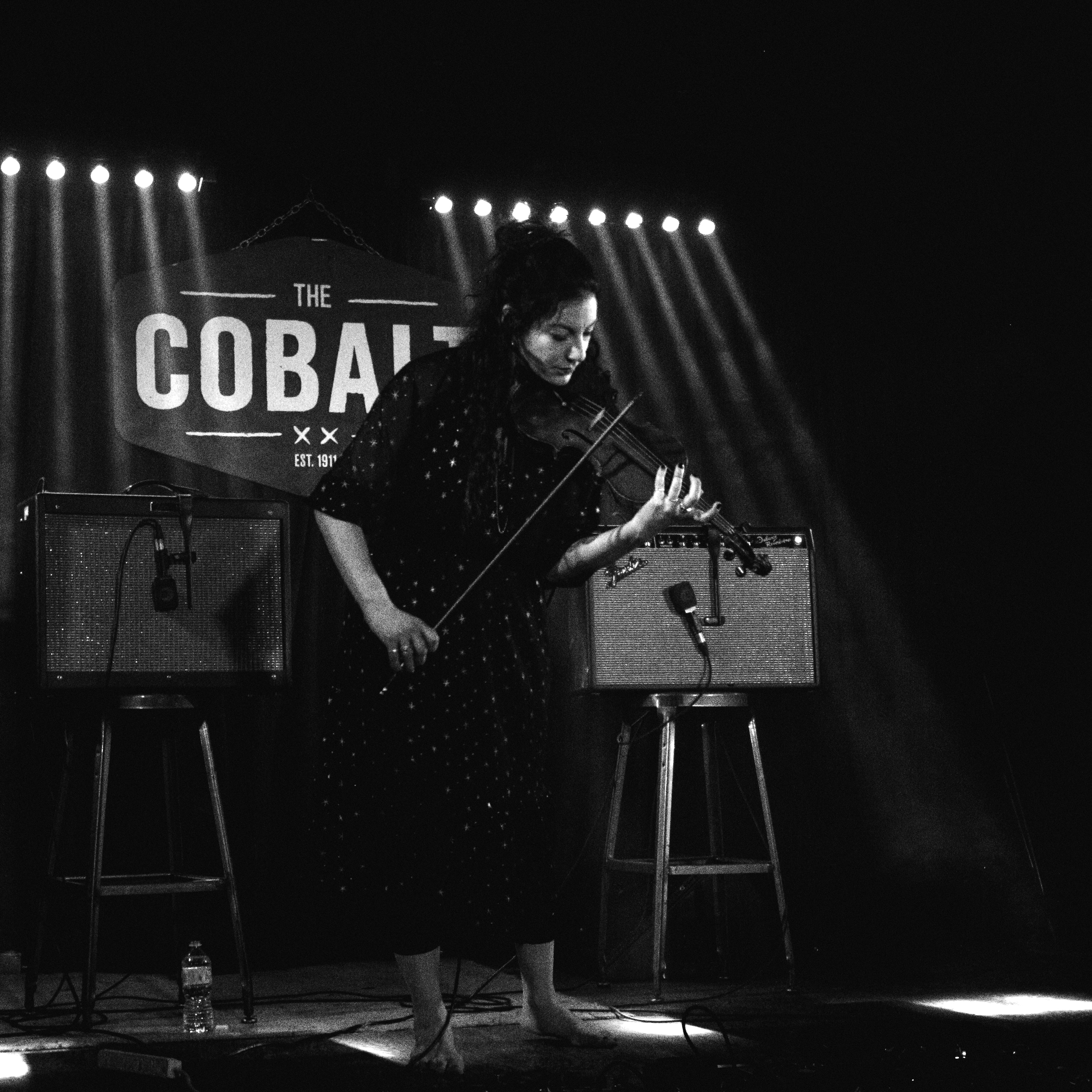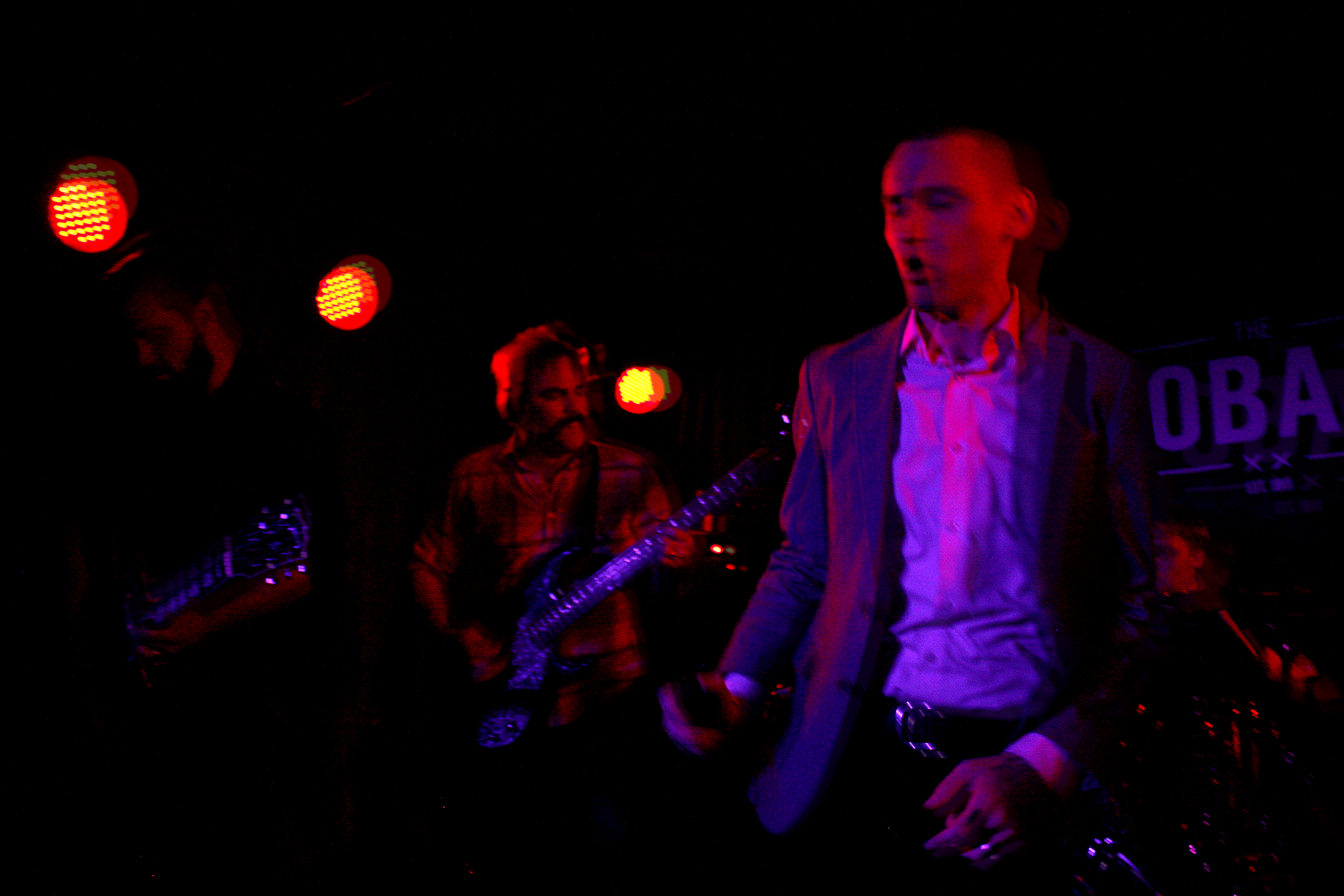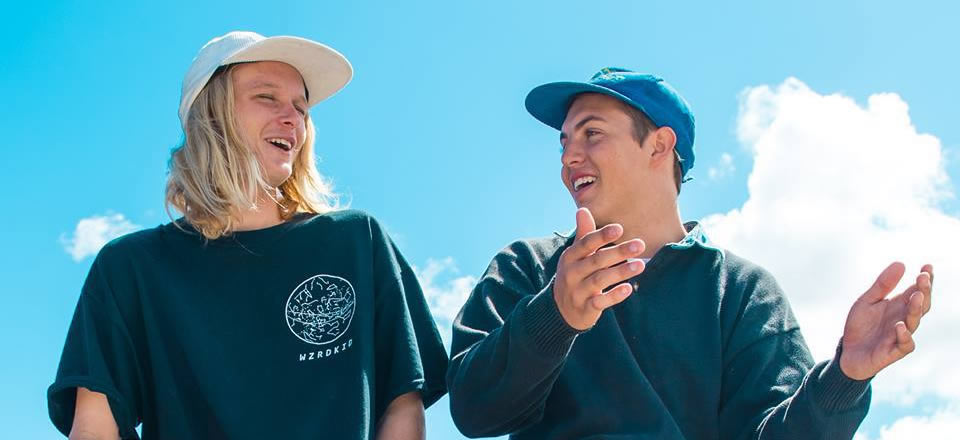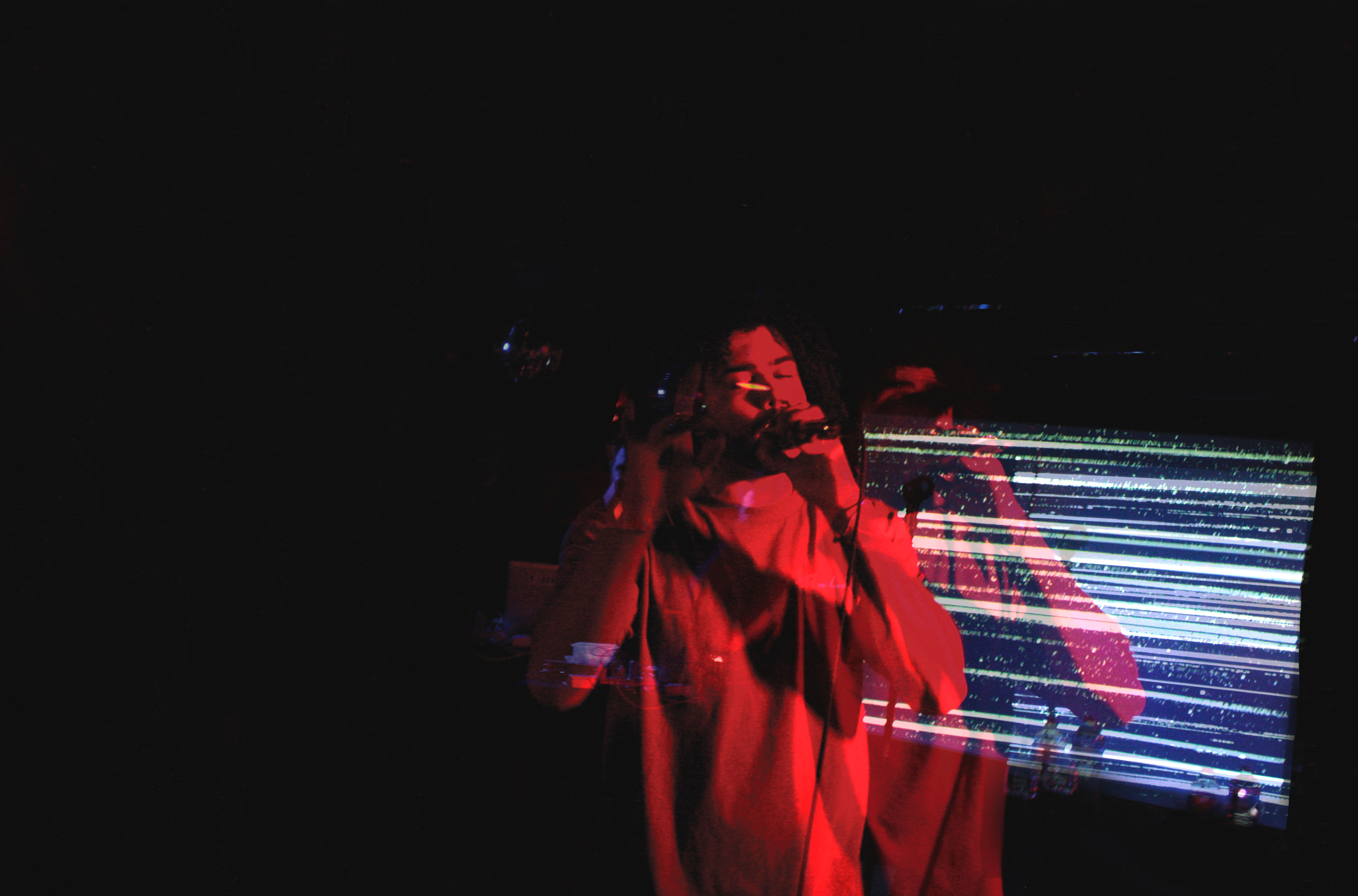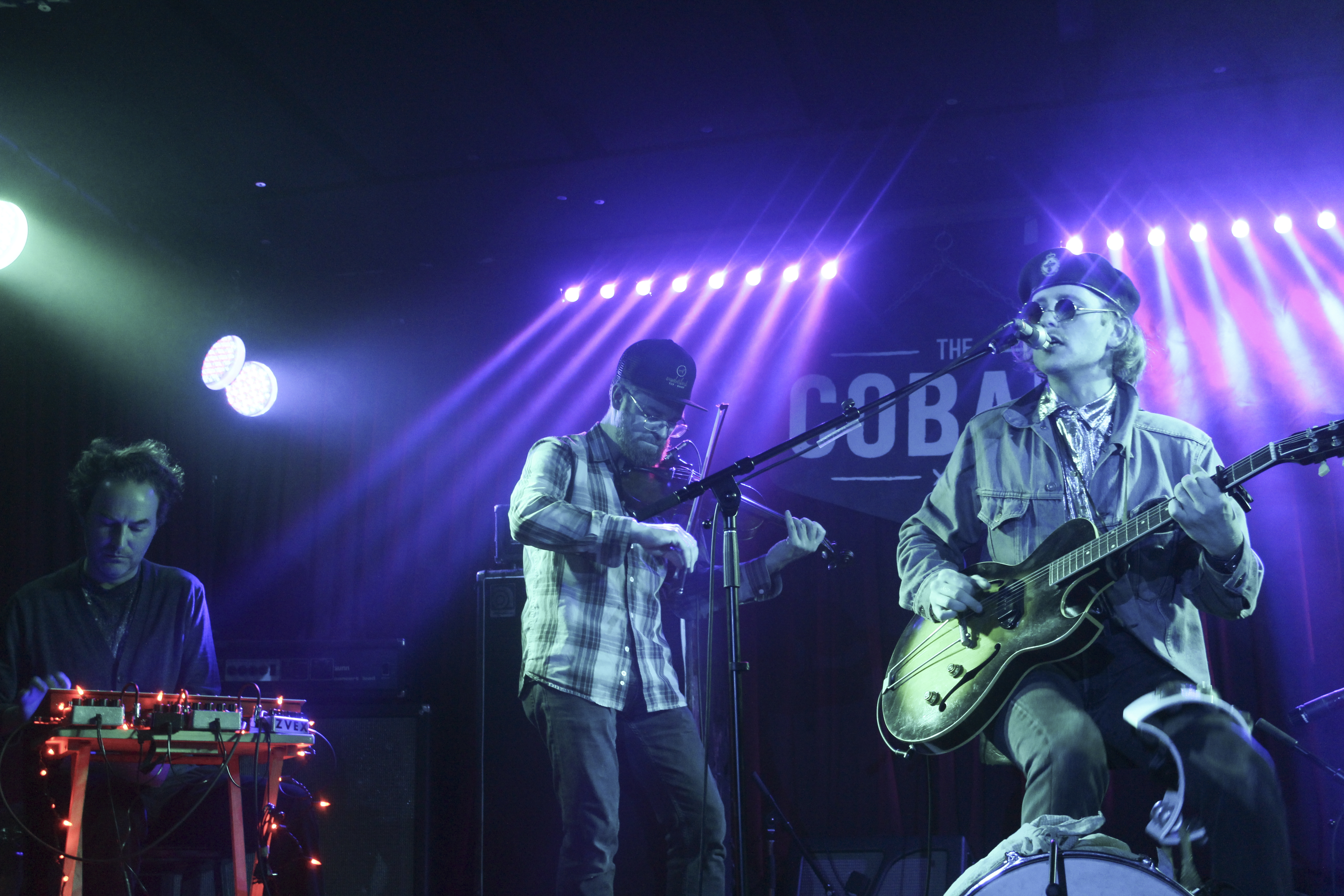The room is mostly silent. There’s a couple sitting at one of the tables beside the stage and they talk in a whisper, possibly wary that their voices would carry and disrupt the eerie peace of the Cobalt. I fiddle with a camera and become increasingly aware that my shutter closing and opening is the loudest sound in the bar. On stage two amplifiers buzz with quiet life, patch cords meander dutifully to flickering pedals, and a saxophone seems to bask in the dusty blue light of the stage.
With only two acts on the bill and a nearly empty bar, the show was pushed about an hour back from its original start time. Only after the fifteen or so people that are present start to shuffle restlessly in the dark does the stage manager cave and ushers V. Vecker onto the stage.
This iteration of V. Vecker is sans ensemble — composer / experimentalist Keith Wecker takes the stage all on his own. He stomps on a few pedals, picks up the saxophone and begins to play a mournful song in the way only brass instruments know how. The dirge oscillates hypnotically as V. Vecker bends, folds and stretches the notes in an almost visceral manner, mutating the blue song into an amorphous mass of dark noise that impells the quiet out of the venue. The audience is submerged in the cacophony, almost drowned in it, when suddenly twenty minutes pass and Vecker begins to slowly drain the sound from the room. As we compose ourselves, he thanks the audience and steps off the stage.
A woman in a hoodie gets on stage and starts to move instruments and mics around. She looks composed but pensive, taking her time to decide what goes where. She is carrying a violin, which she proceeds to tune by ear, holding it against the side of her head. When she is satisfied with the tuning she takes her hoodie off, signals to the stage manager and picks up a mic on the floor. She introduces herself as Jessica Moss.
Moss begins her set by sitting on the floor and telling a story about how she just played a festival in Alberta, and that she performed in a small room beside another venue that was hosting a much louder act than herself. She laughs honestly as she retells the story, and assures us that she’d much rather be here in this half empty bar than there. Given the number of people she decides that she would be scrapping her set and instead play us a new composition she has been working on, which is inspired by her loose understanding of “particle entanglement” — a physics theory that suggests when one particle is “entangled” in another the two particles continue to affect each other even if they exists at opposite ends of the earth. She giggles and notes that a romantic metaphor is obvious, but that the song is open to interpretation.
Her set begins much in the way that Wecker’s did: she picks up her violin and beckons out a beautiful song, which fills the quiet once more. But unlike V. Vecker, the song never oppresses, never darkens. It swims elegantly in unison with Moss’ own body as she dances and sways between pedals. Every step is in time, and even her shadow seems alive as her body interrupts the red and blue beams of light that cast down from the rafters.
Amid the swirl of the looped violin, Moss lets herself fall to the floor and reaches for a mic but when she places it to her lips no sound comes. She seems confused, but doesn’t let the problem deter her, and she takes a moment to repair her signal chain. She takes care in not disrupting the song she spent the better part of the set building, and pulls out connections in sync with the ebb and flow of the rhythm. She finds the culprit connection and bypasses it, then adds her shimmering voice into the composition. As her vocals harmonize with her instruments, the crowd, though sparse, is fully immersed in the song. In that moment, to some extent, I think maybe this is what becoming entangled feels like. As the set comes to a close, Moss smiles shamelessly and thanks us for taking part in her world.


